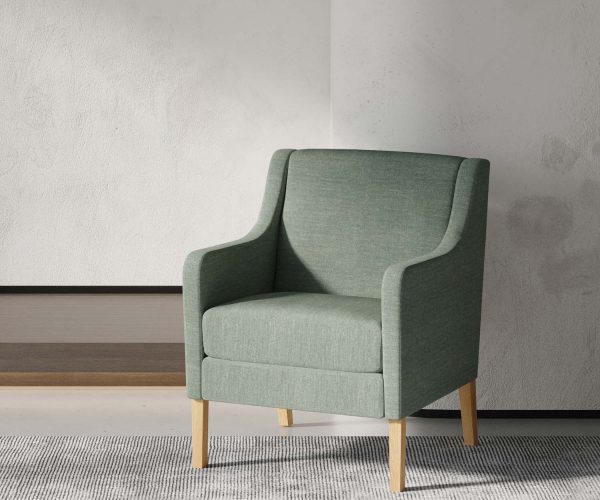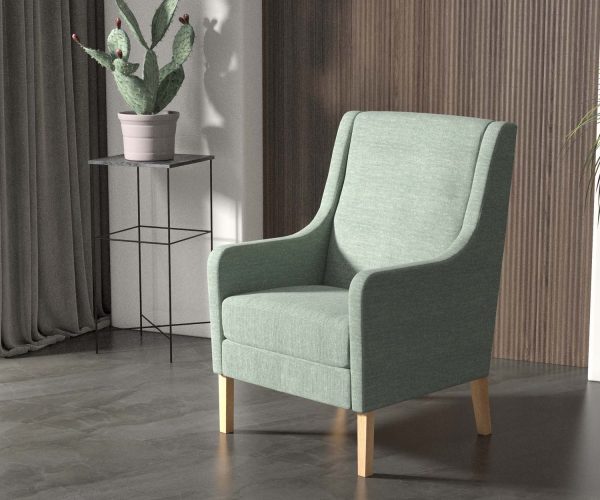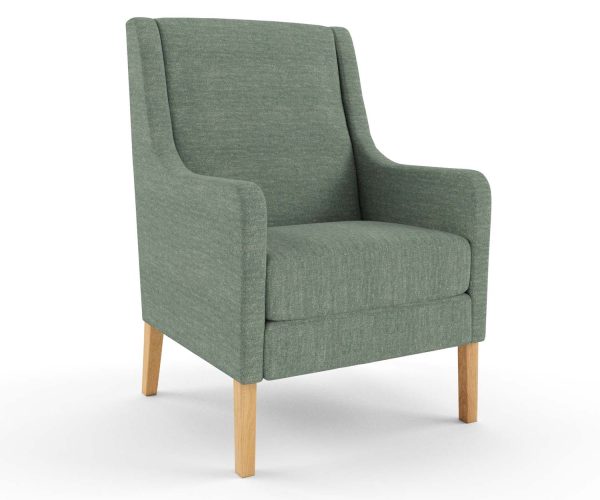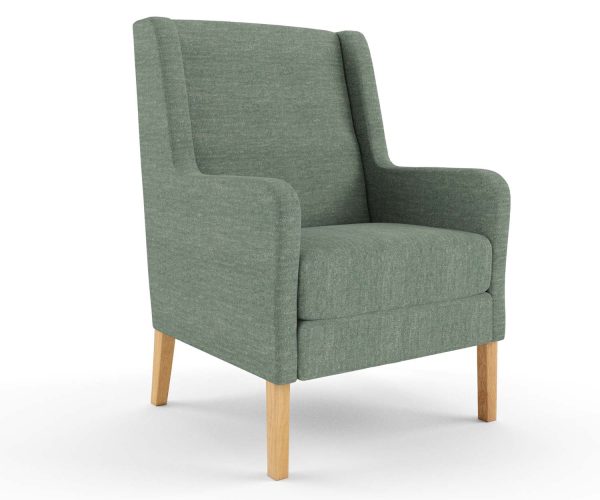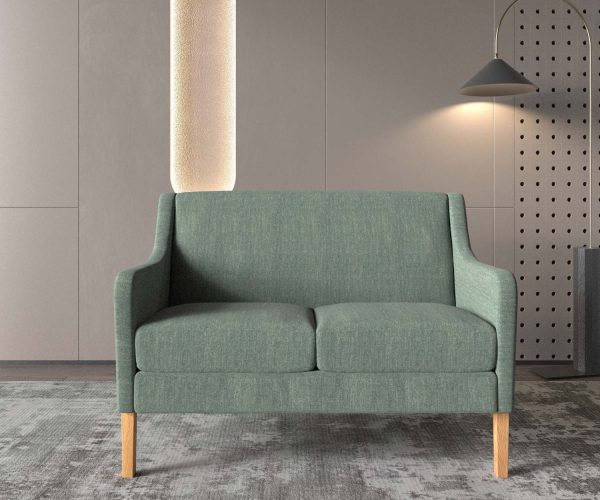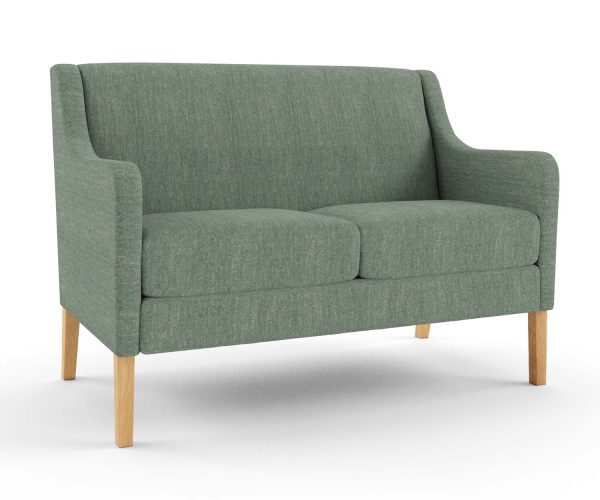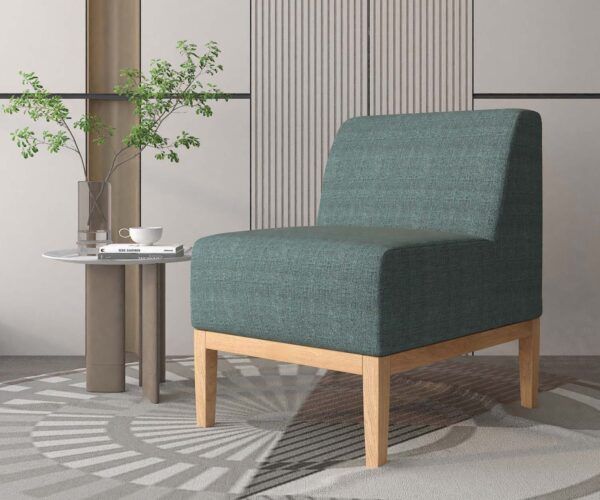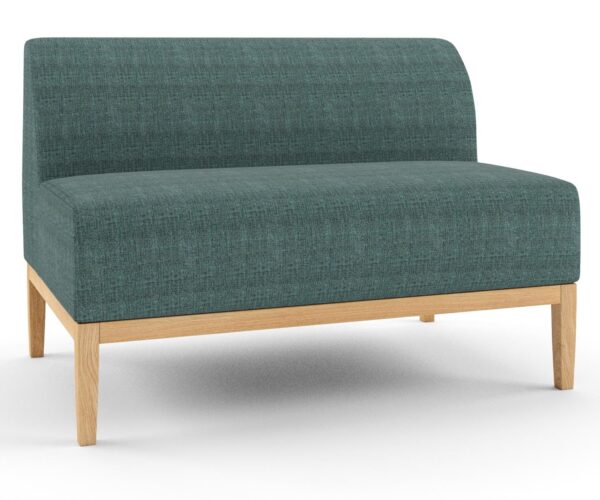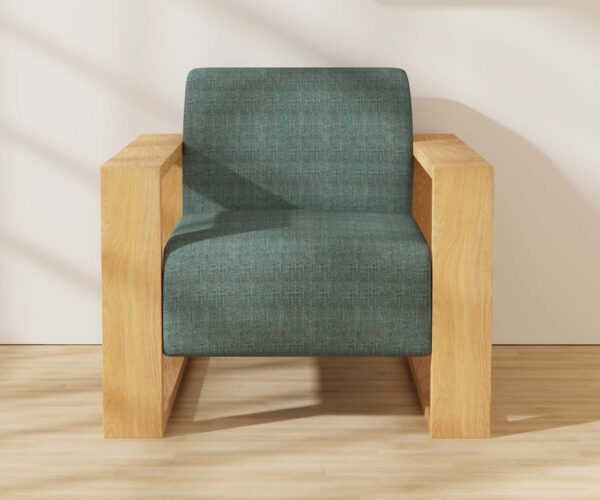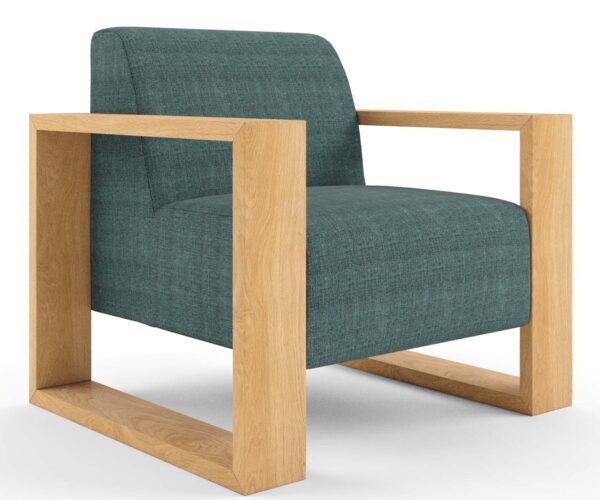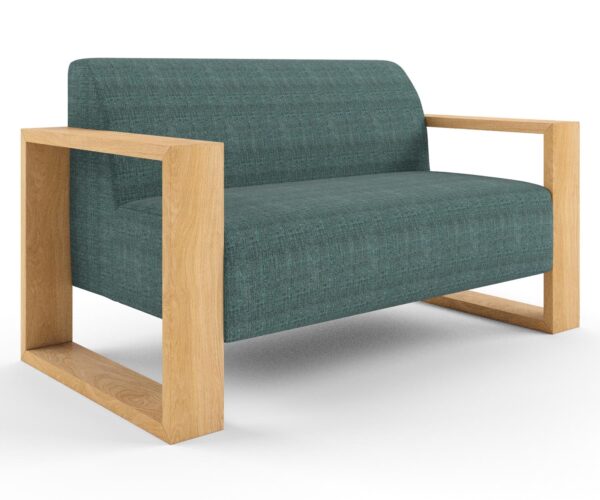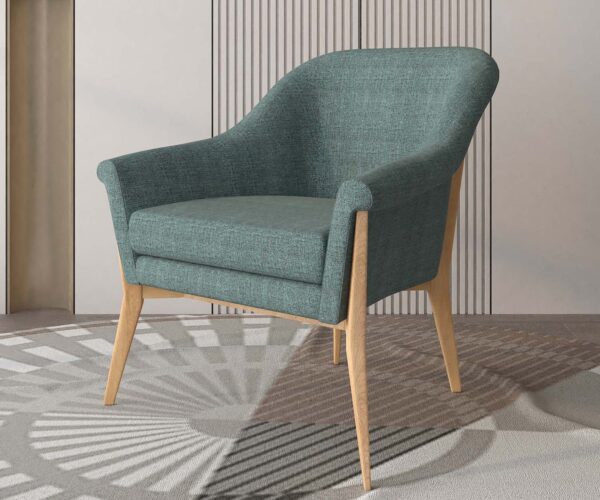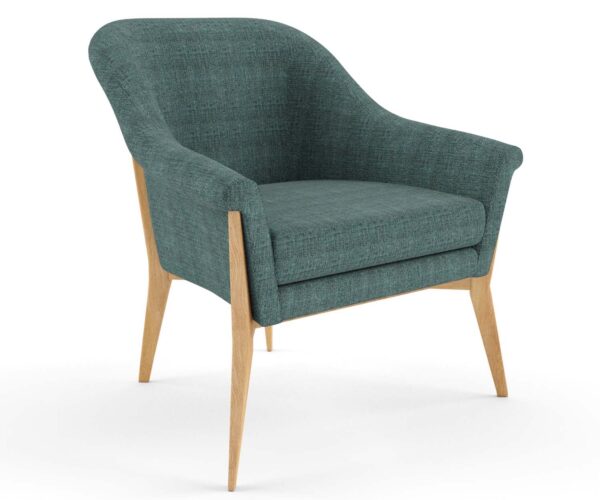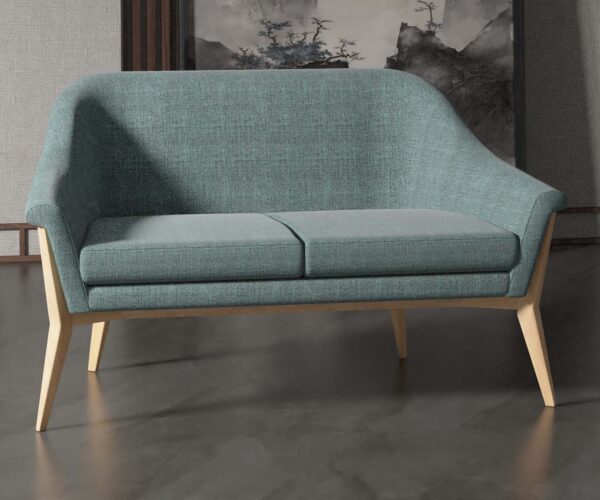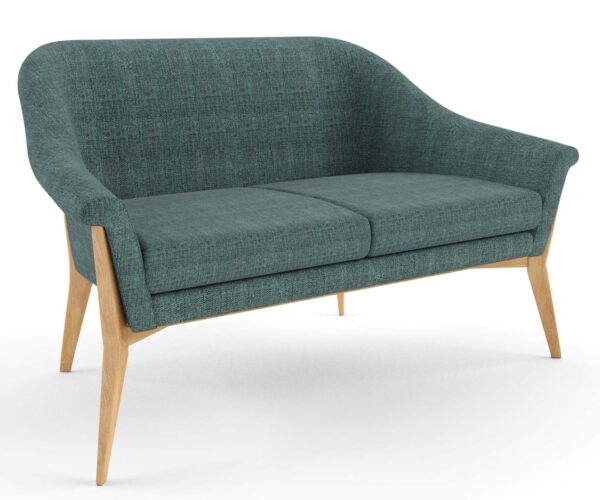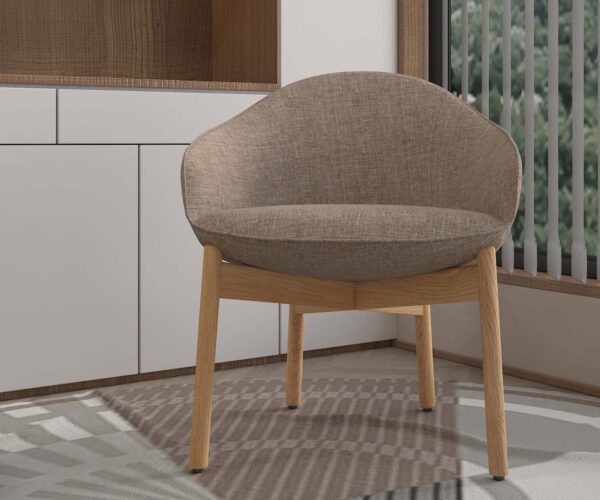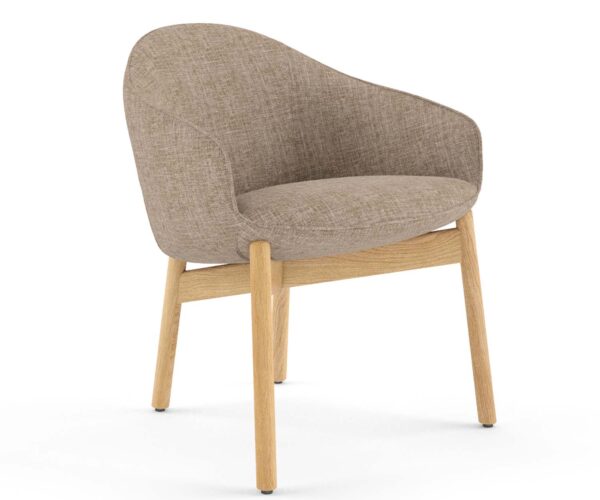Designing with Purpose: A Furniture Checklist for Dementia-Friendly Environments
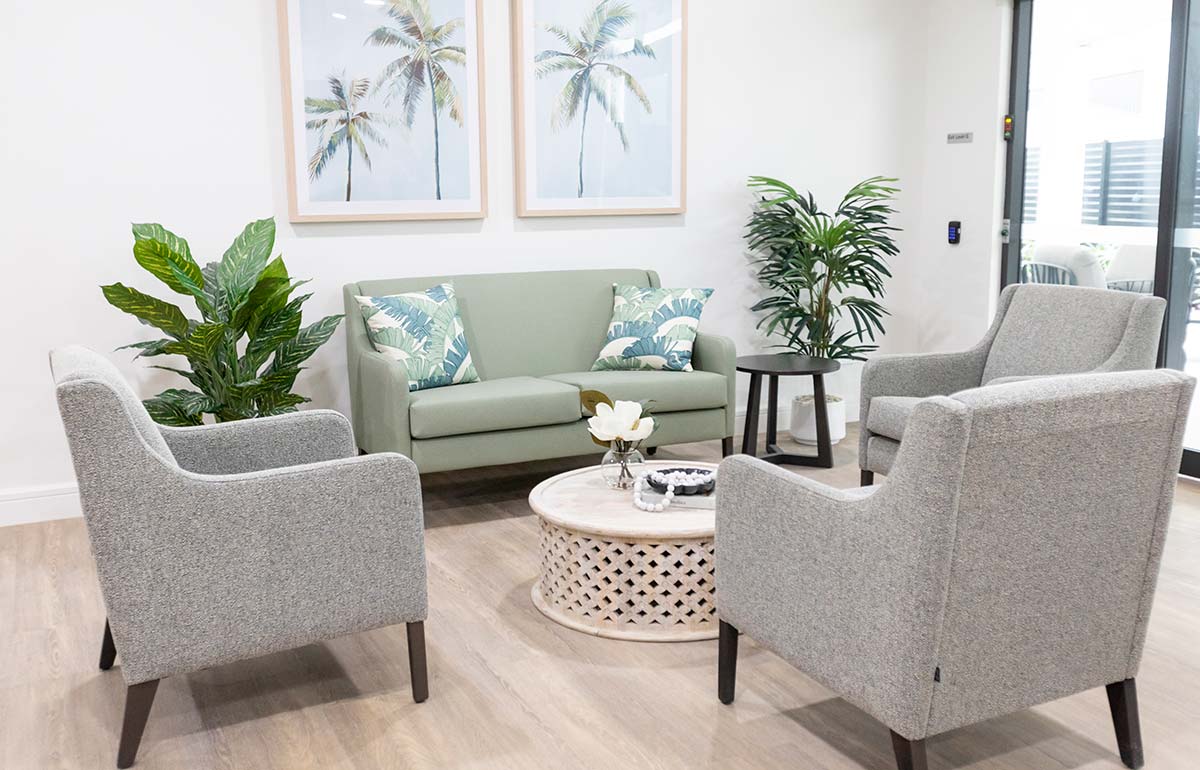
Designing spaces for individuals living with dementia requires careful consideration of various factors to ensure safety, comfort, and well-being. Furniture plays a pivotal role in creating environments that support the unique needs of individuals with dementia, from promoting ease of navigation to reducing stress and confusion. In this article, we’ll explore a comprehensive furniture checklist tailored specifically for dementia-friendly environments, empowering caregivers and designers to create spaces that enhance the quality of life for residents.
1. Prioritize Comfort and Safety:
Prioritizing comfort and safety in furniture selection for dementia-friendly environments is paramount for ensuring the well-being and quality of life of residents.
- Supportive Seating: Choose chairs, sofas, and other seating options with supportive cushions and ergonomic designs. These features help promote proper posture and reduce the risk of discomfort or pain for residents. Look for furniture pieces with firm yet comfortable padding that provides adequate support, especially for individuals who may spend extended periods sitting.
- Sturdy Construction: Choose furniture that is sturdy and stable to prevent tipping or collapsing, which could lead to falls or injuries. Ensure that the materials used are of high quality and capable of withstanding regular use in a care environment. Check for reinforced frames, secure joints, and durable upholstery that can withstand wear and tear over time.
- Safety Features: Evaluate furniture for potential safety hazards, such as sharp edges, protruding parts, or unstable structures. Eliminate or modify any elements that pose a risk to residents, such as removing decorative accents that could be grabbed or bumped into accidentally. Consider using furniture with rounded edges and corners to minimize the risk of injuries in case of accidental falls or collisions.
- Accessible Design: Ensure that furniture is accessible to residents with varying levels of mobility. Choose seating options with armrests to provide support when sitting down or standing up. Consider the height of furniture pieces to facilitate ease of use for residents with mobility challenges, making sure that chairs and sofas are not too low or too high for comfortable access.
- Ease of Cleaning and Maintenance: Select furniture that is easy to clean and maintain to uphold hygiene standards in the care environment. Choose upholstery materials that are resistant to stains and spills, and can be wiped clean easily. Additionally, consider furniture with removable cushions or covers that can be laundered or replaced as needed to ensure cleanliness and freshness.
By prioritizing comfort and safety in furniture selection, caregivers and designers can create a supportive and nurturing environment for individuals living with dementia. Comfortable and safe furniture not only enhances the physical well-being of residents but also contributes to their overall sense of security and contentment in their living space.
2. Incorporate Contrasting Colours and Textures:
Incorporating contrasting colours and textures into the design of furniture for dementia-friendly environments can have a profound impact on the overall atmosphere and functionality of the space.
- Enhancing Visibility: High-contrast colours help individuals with dementia distinguish between different pieces of furniture, aiding in wayfinding and reducing confusion. For example, using chairs with dark-coloured frames and light-coloured upholstery can make them stand out more prominently against the background, making it easier for residents to identify seating areas.
- Improving Depth Perception: Contrast in colours and textures can create visual depth, making furniture pieces more visually distinct and easier to perceive. This can be particularly beneficial in large communal areas where residents may need to navigate through various seating arrangements and activity zones.
- Highlighting Important Features: Contrasting colours and textures can be strategically used to highlight important features of furniture, such as armrests, seat cushions, or table edges. This not only makes these features more visible but also helps residents better understand how to interact with the furniture.
- Providing Sensory Stimulation: Incorporating tactile elements, such as textured fabrics or surfaces, can provide sensory stimulation and enhance the overall sensory experience for residents. Textured upholstery or cushions not only add visual interest but also offer residents a tactile experience, promoting engagement and comfort.
- Creating a Welcoming Atmosphere: The use of contrasting colours and textures can contribute to creating a warm and inviting atmosphere in dementia-friendly environments. Bright, cheerful colours paired with soft, inviting textures can help residents feel more comfortable and at ease in their surroundings.
- Supporting Independence: By making furniture pieces more visually distinct and easier to perceive, contrasting colours and textures can promote residents’ independence and encourage them to navigate their environment with confidence. This can contribute to a greater sense of autonomy and self-esteem among residents.
Incorporating contrasting colours and textures into the design of furniture for dementia-friendly environments serves multiple purposes, from enhancing visibility and depth perception to providing sensory stimulation and creating a welcoming atmosphere. By paying attention to these details, caregivers and designers can create environments that are not only functional and safe but also aesthetically pleasing and supportive of residents’ well-being.
3. Simplify Design:
In dementia-friendly environments, simplicity in furniture design is paramount to create spaces that are easy to navigate and understand for individuals living with dementia. Here are some key considerations for simplifying furniture design:
- Reduce Visual Clutter: Minimize the number of furniture pieces in a room to reduce visual clutter and create a more open and spacious environment. Too many furniture items can overwhelm residents and make it difficult for them to focus on essential elements in their surroundings.
- Clear Pathways: Ensure that furniture placement allows for clear pathways throughout the space. Avoid obstructing walkways with bulky or unnecessary furniture pieces, as this can cause confusion and frustration for residents trying to navigate the area.
- Streamlined Shapes and Lines: Choose furniture with streamlined shapes and clean lines to create a cohesive and harmonious aesthetic. Avoid furniture with intricate details or ornate embellishments, as these can be visually distracting and confusing for individuals with dementia.
- Consistent Colour Palette: Stick to a consistent colour palette for furniture and furnishings to create a sense of unity and coherence in the space. Choose calming and neutral tones that promote a sense of tranquility and well-being, avoiding overly bright or contrasting colours that may be overwhelming.
- Functional Simplicity: Prioritize functionality in furniture design by selecting pieces that serve their intended purpose without unnecessary complexity. Opt for furniture with simple mechanisms and intuitive features that are easy for residents to use and understand.
- Comfortable and Familiar Materials: Choose furniture materials that are comfortable and familiar to residents, such as soft fabrics and natural wood finishes. Avoid materials that may be confusing or uncomfortable, such as glossy surfaces or rough textures.
- Accessible Storage Solutions: Incorporate accessible storage solutions into furniture design to help residents stay organized and maintain a clutter-free environment. Consider furniture pieces with built-in storage compartments or easy-to-reach shelves and drawers.
By simplifying furniture design in dementia-friendly environments, caregivers and designers can create spaces that are calming, comfortable, and supportive for individuals living with dementia. Simplified design promotes ease of navigation, reduces sensory overload, and enhances overall well-being, contributing to a higher quality of life for residents.
4. Opt for Flexible and Modular Solutions:
In dementia care settings, flexibility is key to creating environments that can adapt to the changing needs and preferences of residents. Choosing furniture with flexible and modular features offers numerous benefits in promoting comfort, functionality, and ease of use:
- Versatility: Modular furniture systems allow for easy reconfiguration and adaptation to different spatial layouts and activities. For example, sectional sofas can be rearranged to create intimate conversation areas or opened up to accommodate larger group gatherings. This versatility enables caregivers to optimize space usage and create dynamic living environments that meet residents’ evolving needs.
- Customization: Modular furniture solutions offer opportunities for customization to accommodate individual preferences and requirements. Caregivers can mix and match modular components, such as seating modules and storage units, to create personalized seating arrangements and storage solutions tailored to residents’ comfort and convenience.
- Accessibility: Modular furniture can be designed with accessibility in mind, making it easier for residents with mobility impairments or physical limitations to navigate their surroundings. For instance, modular seating with adjustable heights and configurations can accommodate residents with varying mobility levels, ensuring that everyone can access seating areas comfortably and safely.
- Ease of Maintenance: Modular furniture systems are typically designed for ease of maintenance, with removable and replaceable components that simplify cleaning and repairs. This is particularly beneficial in dementia care settings, where maintaining cleanliness and hygiene is essential for infection control and resident well-being. Additionally, modular furniture designs can facilitate efficient furniture replacement and updates as needed, minimizing disruption to residents and staff.
- Future-Proofing: Investing in flexible and modular furniture solutions offers long-term benefits by future-proofing the environment against changing needs and trends. As the demographics and preferences of residents evolve over time, modular furniture can be easily adapted and updated to accommodate new requirements and design preferences, ensuring that the environment remains relevant and functional for years to come.
By opting for flexible and modular furniture solutions in dementia-friendly environments, caregivers and designers can create adaptable and responsive living spaces that promote comfort, accessibility, and well-being for residents. From optimizing space utilization to enhancing accessibility and customization, modular furniture offers versatile and practical solutions for supporting the diverse needs of individuals living with dementia.
5. Personalize the Environment:
Personalizing the environment is a crucial aspect of creating a dementia-friendly space that feels like home for residents. Here’s an expanded look at how to personalize the environment through furniture design:
- Incorporate Personal Belongings: Encourage residents to bring personal items and furnishings from their own homes into the care environment. This could include cherished furniture pieces, family photos, favorite decorations, or other meaningful possessions. Surrounding residents with familiar objects can evoke a sense of comfort, security, and continuity, reducing feelings of disorientation and confusion.
- Customize Furniture Arrangements: Allow residents to have some control over the arrangement of furniture in their living spaces. Offer options for rearranging furniture layouts based on individual preferences and needs, empowering residents to create environments that suit their unique tastes and lifestyles. This sense of autonomy can enhance residents’ sense of identity and agency, fostering a greater sense of well-being and satisfaction.
- Create Memory Stations: Designate specific areas within the care environment as “memory stations” where residents can engage in reminiscence activities and connect with meaningful memories. Incorporate personalized elements into these areas, such as memory boxes filled with mementos, familiar furniture pieces from different periods of residents’ lives, or thematic decorations that reflect residents’ interests and life experiences. Memory stations provide opportunities for residents to reminisce, share stories, and engage in meaningful social interactions, promoting cognitive stimulation and emotional well-being.
- Use Familiar Design Elements: Integrate design elements and furnishings that evoke familiar settings and experiences from residents’ pasts. This could include incorporating furniture styles, patterns, and motifs reminiscent of different historical periods or cultural backgrounds that hold personal significance for residents. For example, using traditional wooden furniture with ornate carvings or incorporating vintage-inspired decor accents can evoke memories of home and family, creating a sense of comfort and reassurance.
- Facilitate Personalized Activities: Design furniture with built-in features that support residents’ favorite activities and hobbies. For example, incorporate adjustable tables or work surfaces for residents who enjoy crafting, painting, or writing. Provide comfortable seating areas with adequate lighting for residents who enjoy reading or socializing with friends and family. By tailoring furniture design to accommodate residents’ individual interests and preferences, caregivers can create personalized spaces that promote engagement, fulfillment, and a sense of purpose.
Incorporating personalization into the design of dementia-friendly environments goes beyond mere decoration—it involves creating meaningful connections to residents’ pasts, preferences, and identities. By embracing residents’ personal belongings, empowering them to customize their living spaces, and designing environments that reflect their unique life experiences, caregivers can foster a sense of belonging, security, and well-being for individuals living with dementia.
Designing dementia-friendly environments requires a thoughtful and purposeful approach to furniture selection. By prioritizing comfort, safety, simplicity, flexibility, and personalization, caregivers and designers can create spaces that enhance the well-being and dignity of individuals living with dementia. By following this comprehensive furniture checklist, caregivers and designers can navigate the complexities of dementia care with confidence, creating environments that promote comfort, familiarity, and quality of life for residents.
Australian Made Armchairs: Designed for Longevity in Aged Care Settings
More News
Designing with Purpose: A Furniture Checklist for Dementia-Friendly Environments

Designing spaces for individuals living with dementia requires careful consideration of various factors to ensure safety, comfort, and well-being. Furniture plays a pivotal role in creating environments that support the unique needs of individuals with dementia, from promoting ease of navigation to reducing stress and confusion. In this article, we’ll explore a comprehensive furniture checklist tailored specifically for dementia-friendly environments, empowering caregivers and designers to create spaces that enhance the quality of life for residents.
1. Prioritize Comfort and Safety:
Prioritizing comfort and safety in furniture selection for dementia-friendly environments is paramount for ensuring the well-being and quality of life of residents.
- Supportive Seating: Choose chairs, sofas, and other seating options with supportive cushions and ergonomic designs. These features help promote proper posture and reduce the risk of discomfort or pain for residents. Look for furniture pieces with firm yet comfortable padding that provides adequate support, especially for individuals who may spend extended periods sitting.
- Sturdy Construction: Choose furniture that is sturdy and stable to prevent tipping or collapsing, which could lead to falls or injuries. Ensure that the materials used are of high quality and capable of withstanding regular use in a care environment. Check for reinforced frames, secure joints, and durable upholstery that can withstand wear and tear over time.
- Safety Features: Evaluate furniture for potential safety hazards, such as sharp edges, protruding parts, or unstable structures. Eliminate or modify any elements that pose a risk to residents, such as removing decorative accents that could be grabbed or bumped into accidentally. Consider using furniture with rounded edges and corners to minimize the risk of injuries in case of accidental falls or collisions.
- Accessible Design: Ensure that furniture is accessible to residents with varying levels of mobility. Choose seating options with armrests to provide support when sitting down or standing up. Consider the height of furniture pieces to facilitate ease of use for residents with mobility challenges, making sure that chairs and sofas are not too low or too high for comfortable access.
- Ease of Cleaning and Maintenance: Select furniture that is easy to clean and maintain to uphold hygiene standards in the care environment. Choose upholstery materials that are resistant to stains and spills, and can be wiped clean easily. Additionally, consider furniture with removable cushions or covers that can be laundered or replaced as needed to ensure cleanliness and freshness.
By prioritizing comfort and safety in furniture selection, caregivers and designers can create a supportive and nurturing environment for individuals living with dementia. Comfortable and safe furniture not only enhances the physical well-being of residents but also contributes to their overall sense of security and contentment in their living space.
2. Incorporate Contrasting Colours and Textures:
Incorporating contrasting colours and textures into the design of furniture for dementia-friendly environments can have a profound impact on the overall atmosphere and functionality of the space.
- Enhancing Visibility: High-contrast colours help individuals with dementia distinguish between different pieces of furniture, aiding in wayfinding and reducing confusion. For example, using chairs with dark-coloured frames and light-coloured upholstery can make them stand out more prominently against the background, making it easier for residents to identify seating areas.
- Improving Depth Perception: Contrast in colours and textures can create visual depth, making furniture pieces more visually distinct and easier to perceive. This can be particularly beneficial in large communal areas where residents may need to navigate through various seating arrangements and activity zones.
- Highlighting Important Features: Contrasting colours and textures can be strategically used to highlight important features of furniture, such as armrests, seat cushions, or table edges. This not only makes these features more visible but also helps residents better understand how to interact with the furniture.
- Providing Sensory Stimulation: Incorporating tactile elements, such as textured fabrics or surfaces, can provide sensory stimulation and enhance the overall sensory experience for residents. Textured upholstery or cushions not only add visual interest but also offer residents a tactile experience, promoting engagement and comfort.
- Creating a Welcoming Atmosphere: The use of contrasting colours and textures can contribute to creating a warm and inviting atmosphere in dementia-friendly environments. Bright, cheerful colours paired with soft, inviting textures can help residents feel more comfortable and at ease in their surroundings.
- Supporting Independence: By making furniture pieces more visually distinct and easier to perceive, contrasting colours and textures can promote residents’ independence and encourage them to navigate their environment with confidence. This can contribute to a greater sense of autonomy and self-esteem among residents.
Incorporating contrasting colours and textures into the design of furniture for dementia-friendly environments serves multiple purposes, from enhancing visibility and depth perception to providing sensory stimulation and creating a welcoming atmosphere. By paying attention to these details, caregivers and designers can create environments that are not only functional and safe but also aesthetically pleasing and supportive of residents’ well-being.
3. Simplify Design:
In dementia-friendly environments, simplicity in furniture design is paramount to create spaces that are easy to navigate and understand for individuals living with dementia. Here are some key considerations for simplifying furniture design:
- Reduce Visual Clutter: Minimize the number of furniture pieces in a room to reduce visual clutter and create a more open and spacious environment. Too many furniture items can overwhelm residents and make it difficult for them to focus on essential elements in their surroundings.
- Clear Pathways: Ensure that furniture placement allows for clear pathways throughout the space. Avoid obstructing walkways with bulky or unnecessary furniture pieces, as this can cause confusion and frustration for residents trying to navigate the area.
- Streamlined Shapes and Lines: Choose furniture with streamlined shapes and clean lines to create a cohesive and harmonious aesthetic. Avoid furniture with intricate details or ornate embellishments, as these can be visually distracting and confusing for individuals with dementia.
- Consistent Colour Palette: Stick to a consistent colour palette for furniture and furnishings to create a sense of unity and coherence in the space. Choose calming and neutral tones that promote a sense of tranquility and well-being, avoiding overly bright or contrasting colours that may be overwhelming.
- Functional Simplicity: Prioritize functionality in furniture design by selecting pieces that serve their intended purpose without unnecessary complexity. Opt for furniture with simple mechanisms and intuitive features that are easy for residents to use and understand.
- Comfortable and Familiar Materials: Choose furniture materials that are comfortable and familiar to residents, such as soft fabrics and natural wood finishes. Avoid materials that may be confusing or uncomfortable, such as glossy surfaces or rough textures.
- Accessible Storage Solutions: Incorporate accessible storage solutions into furniture design to help residents stay organized and maintain a clutter-free environment. Consider furniture pieces with built-in storage compartments or easy-to-reach shelves and drawers.
By simplifying furniture design in dementia-friendly environments, caregivers and designers can create spaces that are calming, comfortable, and supportive for individuals living with dementia. Simplified design promotes ease of navigation, reduces sensory overload, and enhances overall well-being, contributing to a higher quality of life for residents.
4. Opt for Flexible and Modular Solutions:
In dementia care settings, flexibility is key to creating environments that can adapt to the changing needs and preferences of residents. Choosing furniture with flexible and modular features offers numerous benefits in promoting comfort, functionality, and ease of use:
- Versatility: Modular furniture systems allow for easy reconfiguration and adaptation to different spatial layouts and activities. For example, sectional sofas can be rearranged to create intimate conversation areas or opened up to accommodate larger group gatherings. This versatility enables caregivers to optimize space usage and create dynamic living environments that meet residents’ evolving needs.
- Customization: Modular furniture solutions offer opportunities for customization to accommodate individual preferences and requirements. Caregivers can mix and match modular components, such as seating modules and storage units, to create personalized seating arrangements and storage solutions tailored to residents’ comfort and convenience.
- Accessibility: Modular furniture can be designed with accessibility in mind, making it easier for residents with mobility impairments or physical limitations to navigate their surroundings. For instance, modular seating with adjustable heights and configurations can accommodate residents with varying mobility levels, ensuring that everyone can access seating areas comfortably and safely.
- Ease of Maintenance: Modular furniture systems are typically designed for ease of maintenance, with removable and replaceable components that simplify cleaning and repairs. This is particularly beneficial in dementia care settings, where maintaining cleanliness and hygiene is essential for infection control and resident well-being. Additionally, modular furniture designs can facilitate efficient furniture replacement and updates as needed, minimizing disruption to residents and staff.
- Future-Proofing: Investing in flexible and modular furniture solutions offers long-term benefits by future-proofing the environment against changing needs and trends. As the demographics and preferences of residents evolve over time, modular furniture can be easily adapted and updated to accommodate new requirements and design preferences, ensuring that the environment remains relevant and functional for years to come.
By opting for flexible and modular furniture solutions in dementia-friendly environments, caregivers and designers can create adaptable and responsive living spaces that promote comfort, accessibility, and well-being for residents. From optimizing space utilization to enhancing accessibility and customization, modular furniture offers versatile and practical solutions for supporting the diverse needs of individuals living with dementia.
5. Personalize the Environment:
Personalizing the environment is a crucial aspect of creating a dementia-friendly space that feels like home for residents. Here’s an expanded look at how to personalize the environment through furniture design:
- Incorporate Personal Belongings: Encourage residents to bring personal items and furnishings from their own homes into the care environment. This could include cherished furniture pieces, family photos, favorite decorations, or other meaningful possessions. Surrounding residents with familiar objects can evoke a sense of comfort, security, and continuity, reducing feelings of disorientation and confusion.
- Customize Furniture Arrangements: Allow residents to have some control over the arrangement of furniture in their living spaces. Offer options for rearranging furniture layouts based on individual preferences and needs, empowering residents to create environments that suit their unique tastes and lifestyles. This sense of autonomy can enhance residents’ sense of identity and agency, fostering a greater sense of well-being and satisfaction.
- Create Memory Stations: Designate specific areas within the care environment as “memory stations” where residents can engage in reminiscence activities and connect with meaningful memories. Incorporate personalized elements into these areas, such as memory boxes filled with mementos, familiar furniture pieces from different periods of residents’ lives, or thematic decorations that reflect residents’ interests and life experiences. Memory stations provide opportunities for residents to reminisce, share stories, and engage in meaningful social interactions, promoting cognitive stimulation and emotional well-being.
- Use Familiar Design Elements: Integrate design elements and furnishings that evoke familiar settings and experiences from residents’ pasts. This could include incorporating furniture styles, patterns, and motifs reminiscent of different historical periods or cultural backgrounds that hold personal significance for residents. For example, using traditional wooden furniture with ornate carvings or incorporating vintage-inspired decor accents can evoke memories of home and family, creating a sense of comfort and reassurance.
- Facilitate Personalized Activities: Design furniture with built-in features that support residents’ favorite activities and hobbies. For example, incorporate adjustable tables or work surfaces for residents who enjoy crafting, painting, or writing. Provide comfortable seating areas with adequate lighting for residents who enjoy reading or socializing with friends and family. By tailoring furniture design to accommodate residents’ individual interests and preferences, caregivers can create personalized spaces that promote engagement, fulfillment, and a sense of purpose.
Incorporating personalization into the design of dementia-friendly environments goes beyond mere decoration—it involves creating meaningful connections to residents’ pasts, preferences, and identities. By embracing residents’ personal belongings, empowering them to customize their living spaces, and designing environments that reflect their unique life experiences, caregivers can foster a sense of belonging, security, and well-being for individuals living with dementia.
Designing dementia-friendly environments requires a thoughtful and purposeful approach to furniture selection. By prioritizing comfort, safety, simplicity, flexibility, and personalization, caregivers and designers can create spaces that enhance the well-being and dignity of individuals living with dementia. By following this comprehensive furniture checklist, caregivers and designers can navigate the complexities of dementia care with confidence, creating environments that promote comfort, familiarity, and quality of life for residents.
Australian Made Armchairs: Designed for Longevity in Aged Care Settings
Commercial furniture by room
Based in Brisbane, we’re an Australian manufacturer of aged care furniture, retirement living furniture, hospital & healthcare furniture, hotel & accommodation furniture and student accommodation furniture. We also supply a range of commercial office furniture.
Discover the FHG Look Book: Your Source of Inspiration for Quality Australian-Made Commercial Furniture
- Quality Craftsmanship: See why we’ve been a trusted partner for over 25 years.
- Local Excellence: Learn how our Brisbane team ensures the highest standards.
- Inspiration and Ideas: Find innovative furniture solutions for any environment.
Don’t miss the opportunity to transform your commercial space with FHG’s expertly crafted furniture. Download the FHG Look Book today and start your journey towards exceptional design and quality.

